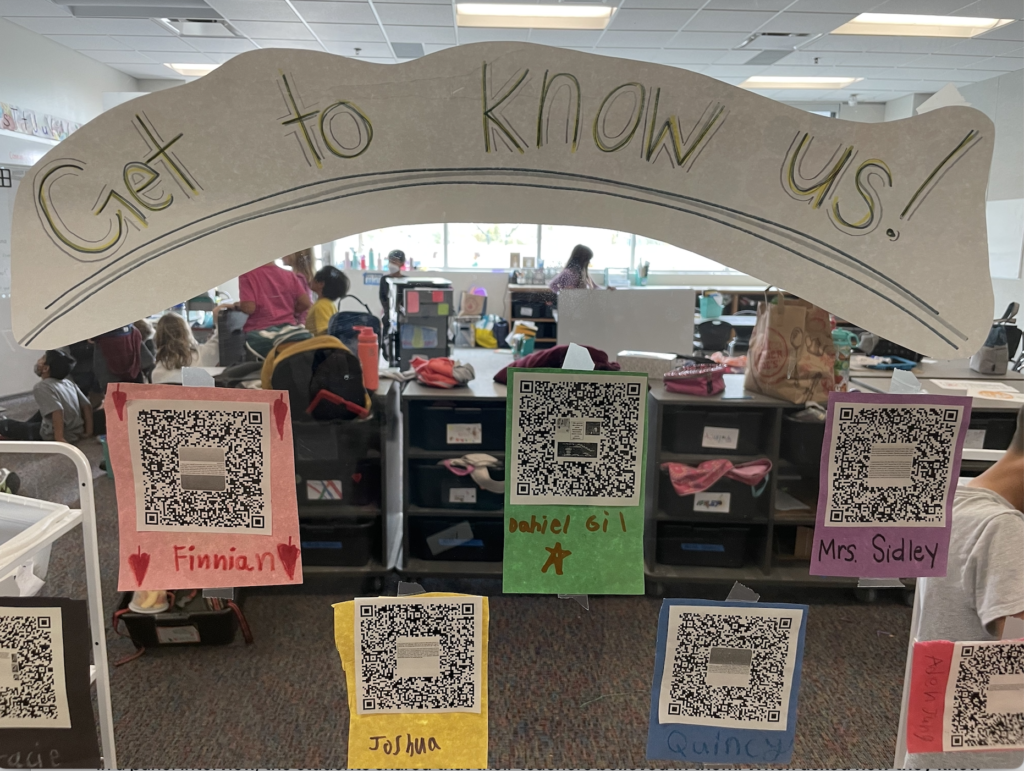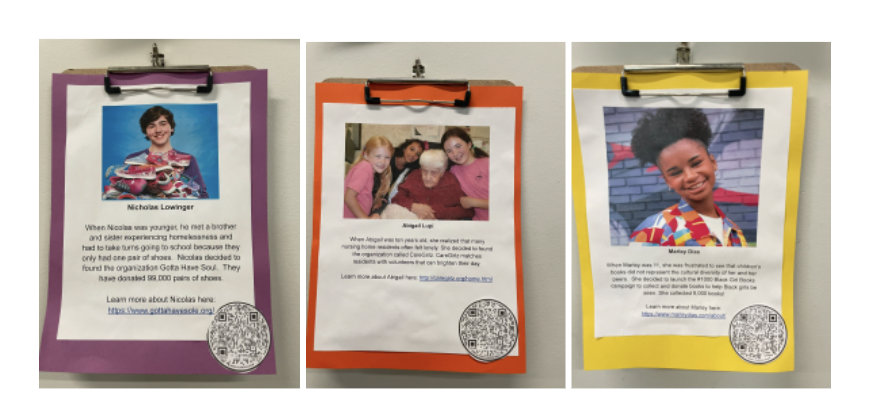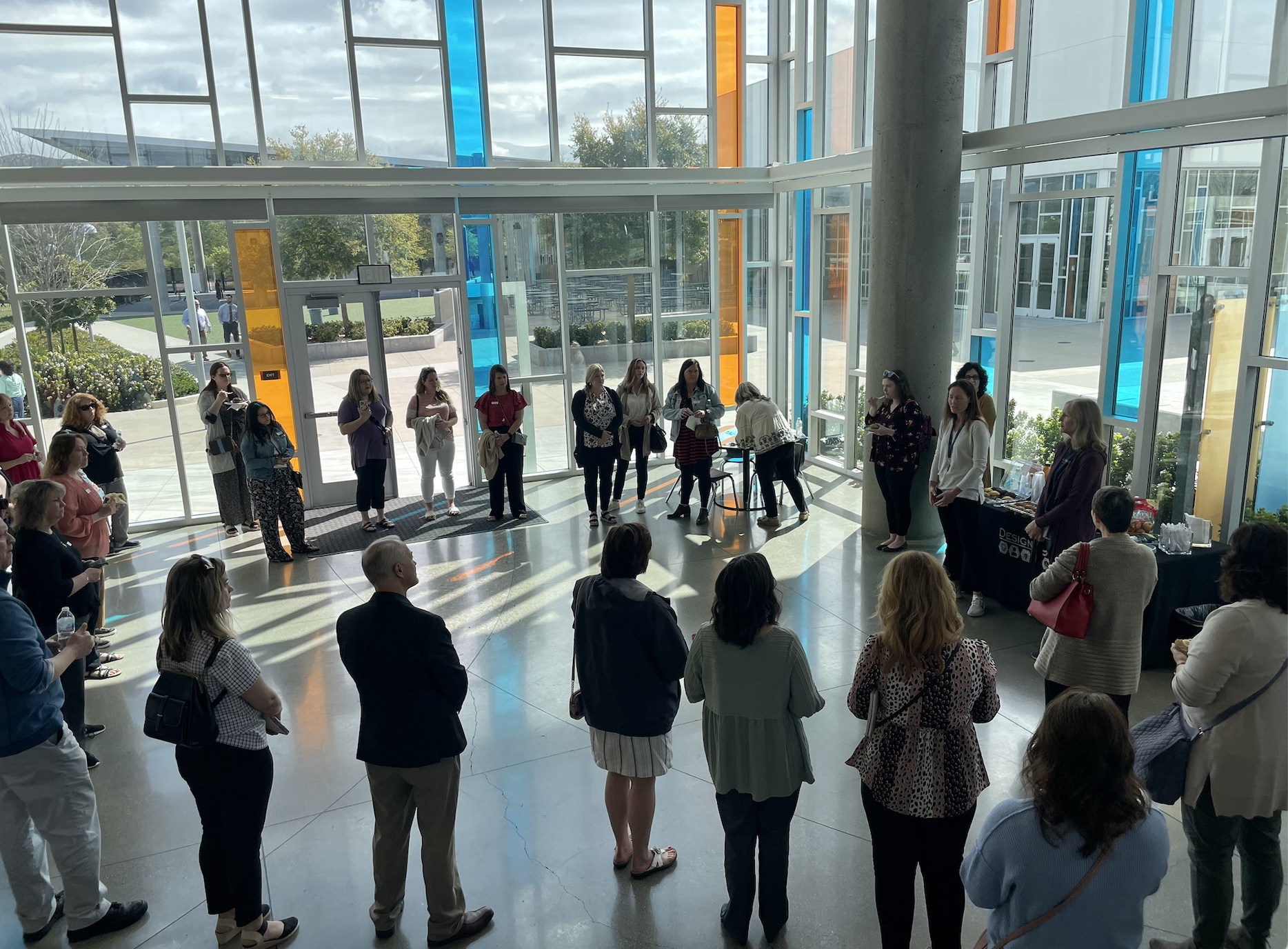This week I got to host school visits that were postponed from March of 2020 (ya know, because of Covid). As over 30 educators joined together, I was overcome by a sense of hope and possibility. I reminded the group, as I do always, that our visits are not about critiquing other practices, they hold 3 purposes in my mind: 1) validate the practices that are working for them 2) push their view of what is possible, and 3) inspire educators to try something new and ultimately better in service of their larger aspirations.
I was inspired by the way young people on all campuses talked about how their teachers believed in them and saw their potential, how teachers had and used the flexibility to design experiences for meaningful learning, and the structures that allowed for students to be engaged in navigating purposeful and relevant work.
Believe in Students
We kicked off the visit at the LaunchPad in Cajon Valley to explore the World of Work. I love how young people are learning about their strengths, interest, and values. One of the pillars is that students get to experience a variety of careers and meet professionals that can share more about their work to inspire learners along their own paths.
In a panel interview, the students shared that their teachers believed in them. When asked how they knew they believed in them, they shared that they talked about their potential and took the time to get to know them and because of that students felt valued they wanted to work harder. With the guidance of a caring adult, they were more motivated to lean into the challenges and continue on their path.
High school students at Sage Creek shared a similar sentiment as I overheard conversations about their favorite teachers. They believed in them, connected with them, and push them to be their best. We not only heard these stories from students but we saw the opportunities that were provided for them and how they impacted the work that they were doing and their motivation. Here are a few highlights from the visits.

Design for Learning, Not Control
At Design39 Campus, where Kelly Eveleth, one of the amazing teachers who helped design the school, kicked off the tour by sharing, “You are seeing our best version yet.” As a learner-centered lab school, Design39 has continued to evolve each year as they try new things and learn.
There are so many powerful aspects to highlight, but at the core, the agency and powerful learning experiences that exist for students are largely related to the agency that teachers have to design those experiences. For example, when you walk the halls or come around a corner you might come upon a learner who is working independently or racing to recess, or just hanging out in the library. One teacher acknowledged that this was different than what they were used to and Stacey Lamb, another founding teacher, shared how the teachers put all their practices out on the table to be questioned. As they questioned many common practices, like walking in lines, they couldn’t justify the practice based on their goals for learners, so they omitted that common rule.
With a shared vision of high academic, social and emotional well-being outcomes, teachers are empowered to question policies, test out ideas, and design the best experiences for learners to achieve their goals.
Create Structures for Learners to Engage in Purposeful Work
We saw students talking about current events and teachers giving them opportunities to be engaged in relevant real-world and think about their opinion, back it up, and have conversations to hear other perspectives, and share what they are thinking and why. I was blown away by the level of discussion, collaboration, and ingenuity we saw.
I especially loved talking to the students about their progress on their Genius. Projects They were preparing their speeches, getting feedback, and ready to share their ideas and projects. The school website highlights more about the process and the final project:
| The Sage Creek Genius Project is a year-long, student-chosen, passion project. Students are invited to choose their projects, execute their plan, and then reflect on their experience in a TED-Style Talk presented to peers and community members.Students’ projects fulfill three criteria: passion, impact, and challenge. |
| Click here for an Overview of the Genius Project |
Raising the Bar
As Kelly reminded us, “when you raise the bar for kids, they often exceed it.” We spend too much time thinking about what kids can’t do and creating systems to control people rather than raising the bar and providing support to get there. How might you raise the bar?

Want more on Learner-Centered Practices:
Check out my new podcast!
Sign up for my weekly Bright Spots Newsletter



0 Comments